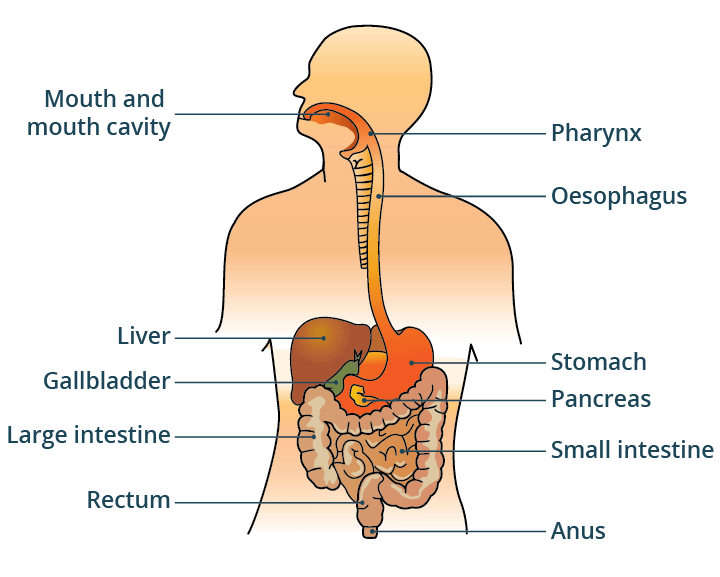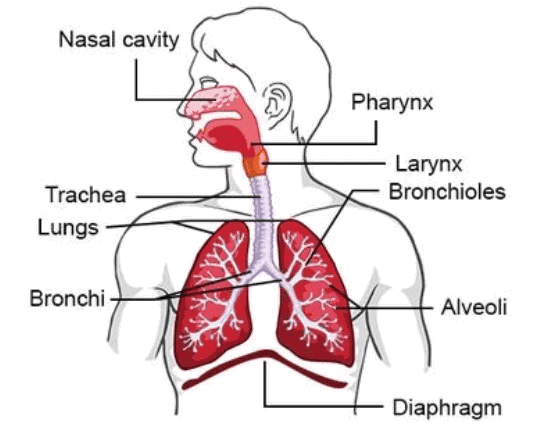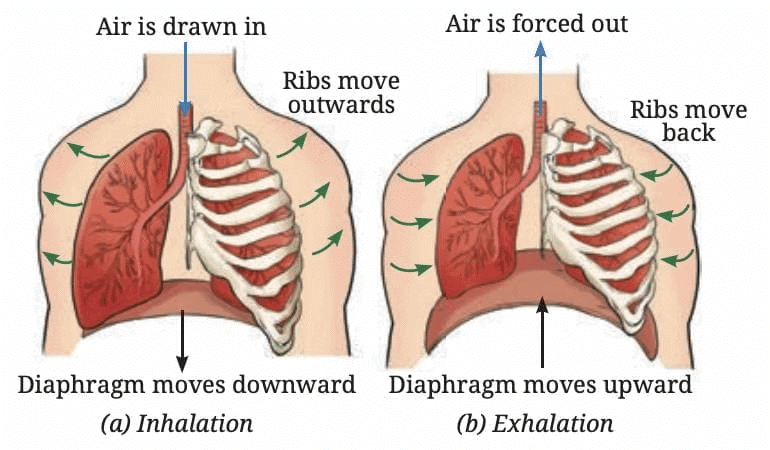Mnemonics: Life Processes in Animals | Science Olympiad Class 7 PDF Download
| Table of contents |

|
| Parts/Pathway of Digestive System |

|
| Digestive Juices |

|
| Ruminant Digestion Process |

|
| Parts of the Respiratory System |

|
| Mechanism of Breathing |

|
Parts/Pathway of Digestive System
Mnemonic: "My Food Stays Super Long"
My – Mouth
Food – Food pipe (Oesophagus)
Stays – Stomach
Super – Small intestine
Long – Large intestine

Mnemonic Explanation: Food passes through the mouth, where digestion begins, then moves through the food pipe to the stomach. It continues to the small intestine for nutrient absorption and ends in the large intestine, where water is absorbed and waste is removed.
Digestive Juices
Mnemonic: " Some Healthy People Bite Slow"
- Some - Saliva
- Healthy- HCl
- People – Pancreatic juice
- Bite – Bile
- Slow – Small Intestine Juice
Mnemonic Explanation :

Ruminant Digestion Process
Mnemonic: "Swallow, Store, Return, Re-chew"
- Swallow – Swallow food
- Store – Store in the rumen
- Return – Return to mouth
- Re-Chew – Re-chew (Rumination)
Mnemonic Explanation: Ruminants like cows first swallow grass, store it in the rumen, then return it to the mouth to re-chew it thoroughly. This helps break down tough plant material for better digestion.
Parts of the Respiratory System
Mnemonic: "Nice Nose Takes Long Adventure"
- Nice – Nostrils
- Nose – Nasal Passage
- Takes– Trachea (Windpipe)
- Long – Lungs
- Adventure – Alveoli
 Mnemonic Explanation: Air enters through the nostrils, travels via nasal passages and trachea, reaches the lungs, and ends at tiny sacs called alveoli, where gas exchange (oxygen and carbon dioxide) takes place.
Mnemonic Explanation: Air enters through the nostrils, travels via nasal passages and trachea, reaches the lungs, and ends at tiny sacs called alveoli, where gas exchange (oxygen and carbon dioxide) takes place.
Mechanism of Breathing
Mnemonic: "In Down....Out Up" : Pair of Opposites
- In – Inhale
- Down – Diaphragm moves down
- Out – Exhale
- Up – Diaphragm moves up

Mnemonic Explanation: During inhalation, the diaphragm moves down, creating space for air to enter. During exhalation, it moves up, pushing air out of the lungs.
|
33 videos|131 docs|54 tests
|
FAQs on Mnemonics: Life Processes in Animals - Science Olympiad Class 7
| 1. What are the main parts of the digestive system and their functions? |  |
| 2. What are digestive juices, and what role do they play in digestion? |  |
| 3. How does ruminant digestion differ from that of non-ruminants? |  |
| 4. What are the main parts of the respiratory system? |  |
| 5. What is the mechanism of breathing, and how does it work? |  |















